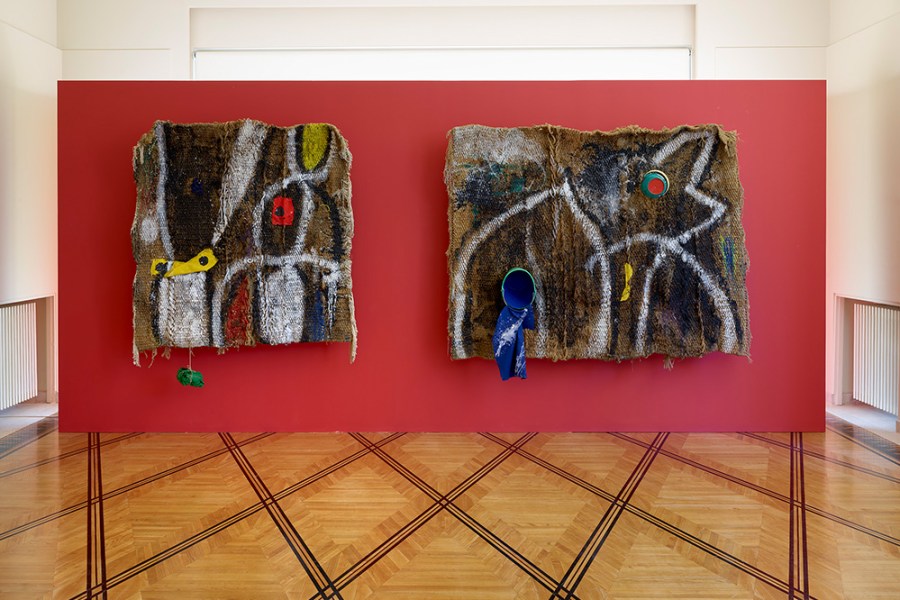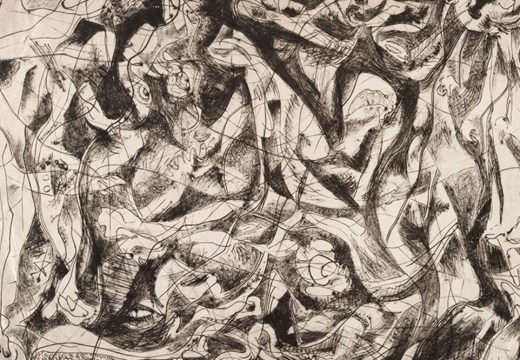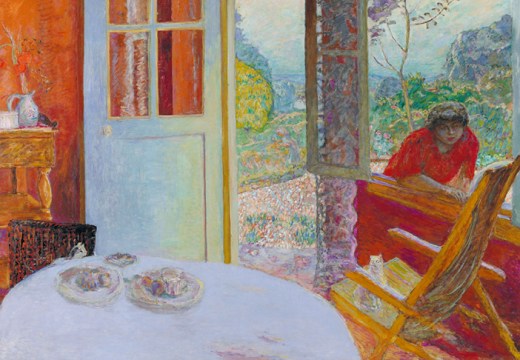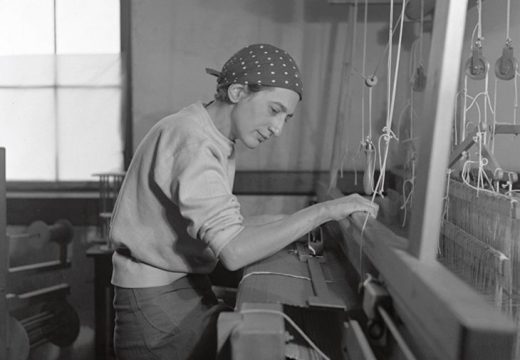One morning, hidden away in an abandoned flour mill in the port city of Tarragona, Spain, an 80-year-old Joan Miró took a blowtorch to his latest painting. As the fire burned, his collaborator, a master weaver named Josep Royo, brought across a bucket filled with black ink. With an inky mop, the artist quelled the flames, used his fingers to mix black ink and ash, and made marks where the canvas had been left unscathed. These burnt canvases – or Teles Cremades – were made contemporaneously with 33 tapestries – Sobreteixims – in the same year (1972–73). Miró and Royo sought to challenge the gaps between tapestry, collage and sculpture, bringing all three elements together to create three-dimensional pieces of protest art. This destructive turn should have come as no surprise. As early as 1927, Miró proclaimed: ‘I want to assassinate painting!’
In 1936, Miró more directly discussed his opinions on creativity and ageing in an interview with Georges Duthuit, claiming younger artists were overly anxious of a ‘shameful decline at the age of thirty’. Miró, on the other hand, admired the likes of Pierre Bonnard and Aristide Maillol, both of whom experimented well into their later years. Miró told Duthuit: ‘These two will continue to struggle until their last breath. Each year of their old age marks a new birth. The great ones develop and grow as they get older.’ Over the course of his lifetime, biographer Janis Mink estimates that Miró himself made at least 2,000 oil paintings, 500 sculptures, 400 ceramics and 5,000 drawings. But as the artist predicted, true innovation came with maturity, in the form of his experimental tapestries and charred canvases.

Installation view of ‘Joan Miró: Signs and figurations’ at Serralves Villa in Porto. Photo: © Filipe Braga
Some of these pieces are included in the ‘Signs and figurations’ exhibition at Serralves House in Porto, which places early and late works next to one another, tying together Miró’s broad use of materials and visual motifs. Amid the plastered columns, art deco gilding and mirrored walls of the museum, theTeles Cremades are confronting works. Although recognisably Miró-esque in colour, line, and form, they are less balanced and more dynamic than works such as The Farm (1922). By 1974, many galleries were keen to put on shows of his works that placed the artist within traditions of modernism or Surrealism. Miró, however, was more interested in displaying his new pieces, agreeing to be shown at the Grand Palais in Paris on on the condition they hung the burnt canvases from the ceiling, so viewers could see the front and back. New paintings by Miró may have sold for a small fortune, but these damaged works were deliberately anti-commercial. In an interview with Georges Raillard in 1977, Miró said his destructive actions were ‘another way of saying shit to all those who say these canvases are worth a fortune’.
The Sobreteixim series is striking in a different way. Tucked away from the main corridor, these tapestries leap from a crimson wall: Sobreteixim 10 and Sobreteixim 12 have been fixed with white brackets to enhance the three-dimensionality of the found objects sewn to the fabric. These objects include playful references to the act of making, such as buckets filled with blue felt to emulate the appearance of paint and the cardboard rolls that held the yarn. Miró and Royo used the traditional Catalan sobreteixim (a heavy, decorative, double-woven cloth) to question their place in Spain in the final years of Franco’s regime. The rough, dark-brown material works as a canvas, on to which Miró stitched found objects and rubbed white paint by hand. The same urgency that swept the burnt canvases into being can be felt in the weavings, but the power of craftwork lies in its ability to subvert – Miró and Royo cut wool and tied knots rather than setting a flame to their work (though some also bear burn marks from the blowtorch).

Installation view of ‘Joan Miró: Signs and figurations’ at Serralves Villa in Porto. Photo: © Filipe Braga
Although Miró had collaborated with other craftspeople than Royo (he worked for many years with ceramicist Josep Llorens, making small objects and murals, and created a series of designs for Marie Cuttoli’s tapestry studio in 1934), this was a partnership that pushed the artist in new directions. As Jacques Dupin puts it in Miró (2012): ‘Miró’s incongruous materials and ideas were those of an assassin, and Royo met Miró’s provocations and challenge with his own outrageous excesses; the calm studio of a rather smooth tradition began to bubble and boil.’ The intergenerational collaboration between the older Miró and younger Royo saw both freed from the constraints of their professions: the artist found weaving; the artisan found assemblage. Their artistic exchange can be best seen in Sobreteixim 4, which is made from wool, thread, acrylic paint, collaged paper and a cardboard tube. The tapestry itself was woven by Royo. Miró then added its expression by folding down one corner of the weaving, like a wink, and adding a paper eye, which stares angrily out at the viewer while a tangle of red wool evokes the appearance of a grimace.
The burnt canvases have often been framed by art critics as politically and commercially defiant, but the Sobreteixims, though quieter, reveal a more considered side to the artist’s radical actions, a melding of avant-garde ideas with craft materials and ancient techniques. As Miró told René Bernard in 1978: ‘Don’t you think that the revolution of forms can be liberating? Unsettling people, forcing them to wake up.’
‘Joan Miró: Signs and figurations’ is at Serralves Villa in Porto until 2 October.
Unlimited access from just $16 every 3 months
Subscribe to get unlimited and exclusive access to the top art stories, interviews and exhibition reviews.














![Masterpiece [Re]discovery 2022. Photo: Ben Fisher Photography, courtesy of Masterpiece London](http://www.apollo-magazine.com/wp-content/uploads/2022/07/MPL2022_4263.jpg)
It’s time for the government of London to return to its rightful home